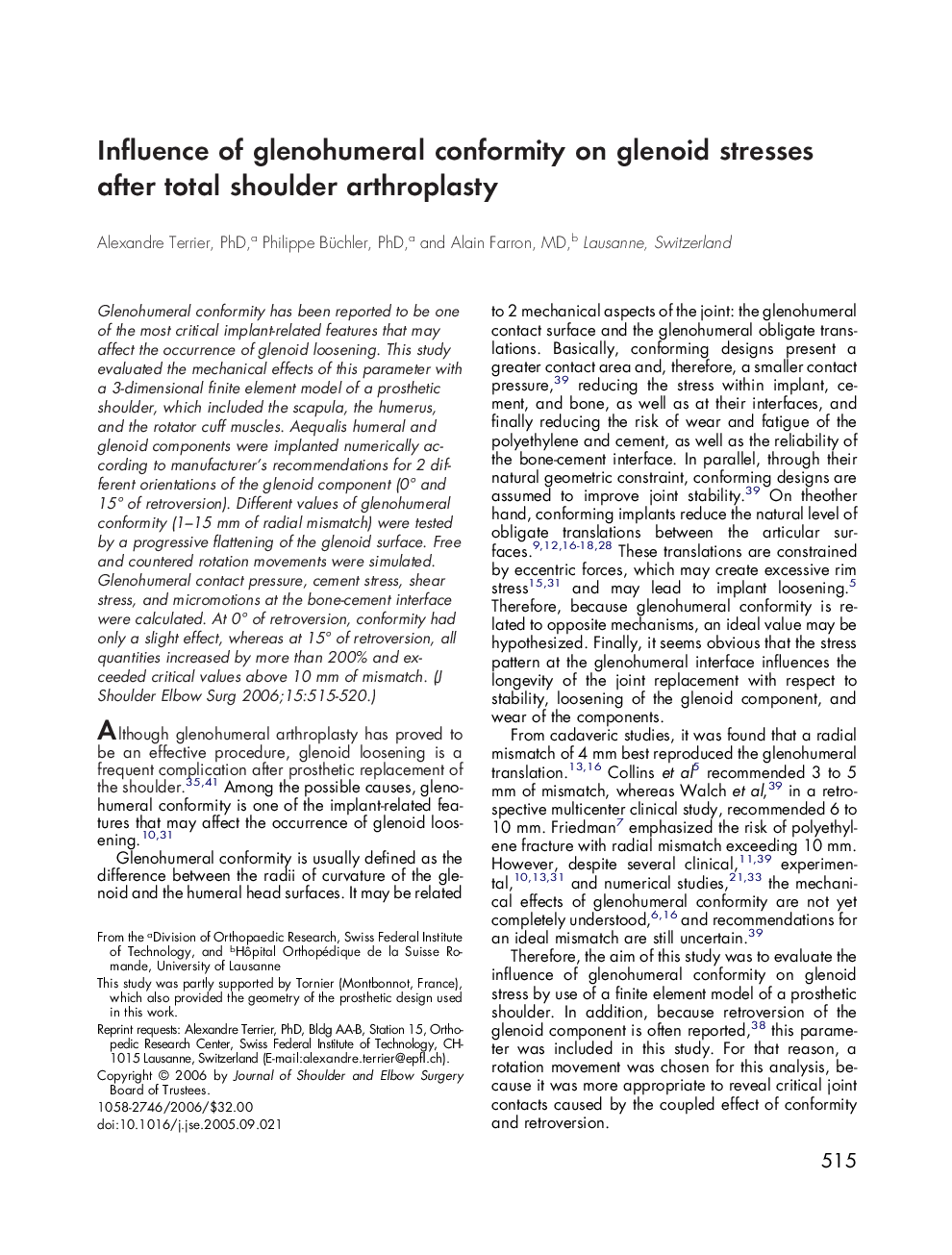| کد مقاله | کد نشریه | سال انتشار | مقاله انگلیسی | نسخه تمام متن |
|---|---|---|---|---|
| 4075436 | 1267038 | 2006 | 6 صفحه PDF | دانلود رایگان |

Glenohumeral conformity has been reported to be one of the most critical implant-related features that may affect the occurrence of glenoid loosening. This study evaluated the mechanical effects of this parameter with a 3-dimensional finite element model of a prosthetic shoulder, which included the scapula, the humerus, and the rotator cuff muscles. Aequalis humeral and glenoid components were implanted numerically according to manufacturer’s recommendations for 2 different orientations of the glenoid component (0° and 15° of retroversion). Different values of glenohumeral conformity (1–15 mm of radial mismatch) were tested by a progressive flattening of the glenoid surface. Free and countered rotation movements were simulated. Glenohumeral contact pressure, cement stress, shear stress, and micromotions at the bone-cement interface were calculated. At 0° of retroversion, conformity had only a slight effect, whereas at 15° of retroversion, all quantities increased by more than 200% and exceeded critical values above 10 mm of mismatch.
Journal: Journal of Shoulder and Elbow Surgery - Volume 15, Issue 4, July–August 2006, Pages 515–520